Week-End at the Waldorf

Brief Synopsis
Cast & Crew
Robert Z. Leonard
Ginger Rogers
Lana Turner
Walter Pidgeon
Van Johnson
Edward Arnold
Film Details
Technical Specs

Synopsis
On a Friday afternoon, the main lobby of New York City's most elegant hotel, the Waldorf-Astoria, is busy with the excitement of arriving, departing and intermingling guests. Among those staying at the hotel are: Irene Malvern, a disillusioned, romance-starved movie star who is in New York for the opening of her latest film; Chip Collyer, a seasoned war correspondent for a newspaper who is resting before his trip to Europe; Captain James Hollis, an Air Force flyer who has returned from the war with a shrapnel fragment lodged near his heart; and Martin X. Edley, a crooked oil stock promoter intent on defrauding the visiting Bey of Aribajan. As part of his scheme, Edley gives the bey the false impression that he is in a partnership with Mr. Jessup, the president of Volcanic Oil. Bunny Smith, an attractive stenographer who dreams of wealth, sees Edley as her ticket to riches, but develops an affection for James soon after she learns that he is scheduled to undergo a risky operation in Washington the following week. Meanwhile, Irene learns that a man has been trying to get closer to her expensive jewels by romancing her maid, Anna. Irene tells Anna to deliver her room key to the jewel thief, in the hopes that she might persuade him through reason to give up his scheme. After asking the hotel police to station a house detective outside her door, Irene waits for the jewel thief to enter. When James loses the sheet music for a song he wrote, a hotel staff member finds it and mistakenly delivers it to orchestra leader Xavier Cugat. Cugat likes the song and promises James that he will play it at his next show. Later that night, Oliver Webson, a cub reporter covering the Edley deal, tells Chip that Edley is negotiating with the bey, and that their contract is bad for the country. Chip offers Oliver help in getting his story, and while doing so, accidentally enters Irene's room. Irene accuses Chip of being a jewel thief, and Chip, who has had a long-standing infatuation with the actress, does not reveal his true identity. After conversing much of the evening, Irene allows Chip to stay in her room to avoid being caught by the house detective. James, meanwhile, falls in love with Bunny, and after telling her his life story, plans a Saturday dinner date with her. On Saturday morning, Irene realizes that Chip is not a jewel thief when Anna telephones her and tells her that the crook has reformed and was with her the previous evening. Later, when Cynthia Drew, a young bride-to-be, tells Irene that she thinks that her fiancé, Bob, is carrying a torch for Irene, Irene tries to prevent Cynthia from calling off the wedding by telling her that she is married to Chip. Chip goes along with the hoax, though he has truly fallen in love with Irene. Edley, meanwhile, asks Bunny to be the bey's escort at a party that night, which forces her to choose between her affection for James and her future employment with Edley. Bunny chooses Edley and cancels her date with James only hours before she was to meet him. Chip, who has been enjoying his "marriage" to Irene, insists that Irene is now his common-law bride because she has introduced him as her husband. Later that night, in the Starlight ballroom, James sees Bunny enter the room with the bey and is heartbroken. On Sunday morning, a newspaper gossip column reports Chip and Irene's supposed marriage, and though the publicity infuriates Irene, she soon realizes that she is in love with Chip. When Monday arrives, a newspaper exposes Edley's fraud and Bunny tells James that she will accompany him to Washington to be with him during his operation. Before checking out of the hotel and leaving for Europe, Chip promises to reunite with Irene when he returns.

Director

Robert Z. Leonard
Cast

Ginger Rogers
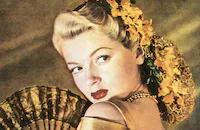
Lana Turner

Walter Pidgeon

Van Johnson

Edward Arnold

Keenan Wynn

Robert Benchley

Phyllis Thaxter

Leon Ames

Lina Romay
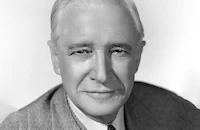
Samuel S. Hinds
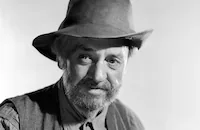
Porter Hall

George Zucco

Miles Mander

Frank Puglia

Michael Kirby
Cora Sue Collins
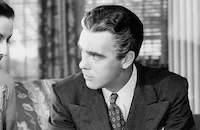
Warner Anderson

Rosemary Decamp
Jacqueline Dewit
Charles Wilson

Irving Bacon

Nana Bryant

Moroni Olsen
William Halligan
Bob Graham
John Wengraf

Xavier Cugat

Russell Hicks

Naomi Childers
William Hall
Bob Mccutchin
George Herndon
Ralph Brooke
Don Hayden
Jimmy Clark
Garry Owen
Jimmy Lucas
Ann Hunter
William Tannen
Mel Schubert
Jack Luden
Richard French
Hal K. Dawson
John Vosper
Charles Madrin
Gladden James
Ruth Warren

Hope Landin
Karen Lind
Gertrude Short
Jean Carpenter
Ethel King
June Glory
Kitty Watson
Rita Claire
Jean Nash
Hazel Flint
Mona Gitterman
Nadine Dennis
Ann Nelson
Joan Cunningham
Trudy Rose
Marjorie Davies
Harriet Mathews
Hilda Rhodes
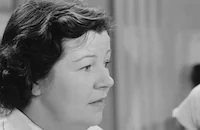
Margaret Bert
Jean Lorraine
Alice Keating
Lucille Curtis
Gloria Hope
Joan Thorsen
Cosmo Sardo
Cedric Stevens

Byron Foulger
Nolan Leary
Mary Icide
Hercules Mendez
Jamiel Hasson
Joe Dominguez
Fuad R. Saadeh
George Davis
Rex Evans
Florence Stevens
Wyndham Standing
Fairfax Burger
Helen Mcleod
Paul Andor
Marek Windheim
Dick Crockett
Edward Kilroy
Chef Milani
Harry Barris
Carli Elinor
Tom Quinn
Charles Ferguson
Harry Adams
George Sherwood
Hazard Newberry
Arno Frey
Roger Neury
Gordon Richards
Ken Carpenter
Arlene Gray
Richard Glynn
Dorothy Christy
Frances Morris
Dick Hirbe
Frank Mcclure
Estelle Ettere
Barbara Powers
Shirley Lew
Billy Louie
Gloria Findlay
Albert Godderis
David Cota
Sandra Morgan
Carmen Beretta
Mary Lee Martin
Ella Ethridge

Bess Flowers
Dick Gordon
Oliver Cross
Mary Louie
Sally Conlin
Ruth Jordan
Rosemarie Stewart
Evelyn Janes
Rita Holland
Joyce Tucker
Darlene Smith
Velma Berg
Kenneth Cutler
Walter Stane
Virginia Hunter
Ruth Lee
Bruce Warren
Alice Wallace
Richard Abbott

Clyde Fillmore
David Alison
Marianne Mosner
Bunny Waters
Nancy Evans
Pat Gleason
W. J. Holmes
Carey Harrison
Harold Miller
Paula Ray

Tim Murdock
George Peters
Mary Lord
Crew
Edward Baravalle
Guy Bolton
Jack Bonar
Mrs. Lucius Boomer
Daniel B. Cathcart
Mark Davis
Peter P. Decker
Ted Duncan
Sammy Fain
Cedric Gibbons
A. Arnold Gillespie
Irving Glassberg
Johnny Green
Sydney Guilaroff
Pepe Guízar
Marion Herwood
Arthur Hornblow Jr.
Irene
Robert J. Kern
Ted Koehler
Standish J. Lambert
Robert Z. Leonard
Bill Lewis
Warren Newcombe
Robert Planck
Ted Saucier
Douglas Shearer
Robert W. Shirley
Newell Sparks
Bella Spewack
Sam Spewack
William Steinkamp
Michael Steinore
Kay Thompson
Charles E. Wallace
Charles Walters
John A. Williams
Edwin B. Willis
Eddie Woehler

Videos
Movie Clip




Trailer
Film Details
Technical Specs

Articles
Weekend at the Waldorf
Over the course of the film, an array of personalities are introduced and conflicts arise amid several musical interludes performed in the Waldorf's Starlight Room by Xavier Cugat, a bandleader dubbed the "Rhumba King" who did much to popularize Latin rhythms for American audiences.
Among the various stories, Captain Hollis falls in love with beautiful hotel stenographer Bunny Smith (Lana Turner). But the lowborn New York City girl would rather escape to Park Avenue with corrupt but wealthy businessman Martin X. Edley (Edward Arnold). Edley is in the process of brokering an oil deal with the Bey of Aribajan (George Zucco) who is staying at the hotel with a retinue of Middle Easterners -- and one goat. Meanwhile, war correspondent Chip Collyer (Walter Pidgeon), recovering from having seen too much killing during the war, finds himself drawn to the lonely Hollywood star Irene Malvern (Ginger Rogers).
At one point, neurotic bride-to-be Cynthia Drew (Phyllis Thaxter) also preparing for her wedding at the Waldorf becomes convinced that her fiancé is in love with Malvern. To reassure her, Malvern concocts a story about being secretly married to Collyer, a tactic that quickly backfires into fodder for the gossip columns. The fake wedding is soon material for nosey newspaper reporter Randy Morton (Robert Benchley) who is decamped at the Waldorf-Astoria. Morton is played by actual journalist and critic Robert Benchley who was famous for his witty writing as a theater critic and editor at such esteemed publications as The New Yorker and Vanity Fair.
Director Robert Z. Leonard deftly packs a wealth of detail and incidents into this remake of Grand Hotel (1932), adapted from the Vicki Baum play by husband and wife reporters turned successful screenwriters Sam and Bella Spewack; they shared an Oscar® nomination in 1940 for My Favorite Wife. The Spewacks add a note of melancholy to the proceedings in continual references throughout the film to World War II. There are uniformed and battle-weary soldiers and correspondents included as characters, but also multiple references in dialogue to battlefield casualties and the war raging when the film was made.
Weekend at the Waldorf features a wealth of topnotch Hollywood talent including romantic leads Rogers and Pidgeon, both experiencing a new, potent phase of their careers in the Forties.
Rogers was convinced to star in Weekend at the Waldorf by producer Arthur Hornblow, Jr.'s promise that her gowns -- 12 in all -- would be designed by Irene and her ornate hairdos would be courtesy of Sydney Guilaroff. "This was the first time I had worked for the giant, MGM, and the studio really pulled out all the stops," Rogers recalled. But there were off days. When an Irene dress Rogers was meant to wear was held up in production, producer Hornblow asked if the star could use something of her own. "It must have been somewhat embarrassing for the producer to ask the star to dip into her own wardrobe to help costume the film," recalled Rogers in Ginger: My Story.
Second-hand costumes aside, Weekend at the Waldorf was by every measure a success. Variety called the film "a big, star-packed show that can't miss."
Coincidentally, there were two other films dedicated to Manhattan landmarks also released in 1945; The Stork Club and Billy Rose's Diamond Horseshoe. Both Rose and Stork Club owner Sherman Billingsley asked for high fees from film studios to center their films on their clubs, but Lucius Bloomer of the Waldorf required no such payment beyond the exceptional publicity a film with the Waldorf at its center would guarantee.
Weekend at the Waldorf was the sixth largest grossing film of 1945 and also a huge hit for Lana Turner; by 1946 Turner had become one of the ten highest paid women in America. She would go on to even greater success with her next film, as the gorgeous white-clad femme fatale alongside John Garfield in The Postman Always Rings Twice (1946).
Lana's character of Bunny Smith in Weekend at the Waldorf found her way into popular culture by becoming the model for the cartoon creation of William Hanna and Joseph Barbera -- Toodles -- who made her debut in 1945 in the MGM cartoon "Springtime for Thomas."
Lana Turner's costar Van Johnson matched Turner's sultriness with his own famously boyish qualities which made the war-weary Hollis an even more vulnerable and poignant character. Johnson was so beloved by bobby-soxers of the day, he was called "the Voiceless Sinatra." His fan base was as formidable as his co-star who was often referred to as the "Sweater Girl" (reportedly Turner earned the nickname when she was discovered by an editor of The Hollywood Reporter in a tight sweater sipping a soda at Schwab's Drugstore). Turner would become one of the favorite pinup girls of WWII soldiers who came into her own as a glamorous MGM star in the Forties.
Director: Robert Z. Leonard
Producer: Arthur Hornblow, Jr.
Screenplay: Sam Spewack, Bella Spewack, Guy Bolton based on the play "Grand Hotel" by Vicki Baum
Cinematography: Robert Planck
Production Design: Cedric Gibbons, Daniel B. Cathcart
Music: Johnny Green
Cast: Ginger Rogers (Irene Malvern), Walter Pidgeon (Chip Collyer), Van Johnson (Capt. James Hollis), Lana Turner (Bunny Smith), Robert Benchley (Randy Morton), Edward Arnold (Martin X. Edley), Leon Ames (Henry Burton).
BW-130m. Closed captioning.
by Felicia Feaster

Weekend at the Waldorf
TCM Remembers Van Johnson - Important Schedule Change on TCM In Honor To Salute VAN JOHNSON
The new schedule for the evening of Tuesday, December 23rd will be:
8:00 PM In the Good Old Summertime
9:45 PM A Guy Named Joe
12:30 AM Thirty Seconds Over Tokyo
2:30 AM The Last Time I Saw Paris
4:30 AM Thrill of a Romance
Van Johnson (1916-2008)
Van Johnson, the boyish leading man whose clean cut, All-American appeal made him a top box-office draw for MGM during World War II, died on December 12 in Nyack, New York of natural causes. He was 92.
He was born Charles Van Dell Johnson on August 25, 1916, in Newport, Rhode Island. By his own account, his early childhood wasn't a stable one. His mother abandoned him when he was just three and his Swedish-born father offered little consolation or nurturing while he was growing up. Not surprisingly, Johnson found solace in singing and dancing lessons, and throughout his adolescence, he longed for a life in show business. After graduating high school in 1934, he relocated to New York City and was soon performing as a chorus boy on Broadway in shows such as New Faces of 1936 and eventually as an understudy in Rodgers and Hart's musical, Too Many Girls in 1939.
Johnson eventually made his way to Hollywood and landed an unbilled debut in the film version of Too Many Girls (1940). By 1941, he signed a brief contract with Warner Bros., but it only earned him a lead in a "B" programmer Murder in the Big House (1941); his contract soon expired and he was dropped by the studio. Johnson was on his way back to New York, but as luck would have it - in the truest Hollywood sense - friends Lucille Ball and Desi Arnaz introduced him to Billy Grady, a lead talent scout at MGM, which was currently Ball's new studio. Johnson was signed up and almost immediately MGM had a star on its hands.
It might have been slow going at first, with Johnson playing able support in films such as Dr. Gillespie's New Assistant and The War Against Mrs. Hadley (both 1942). By 1943 the studio capitalized on his broad smile and freckles and starred him in two of the studio's biggest hits: A Guy Named Joe and The Human Comedy. Those two films transformed him into a boxoffice draw with a huge following, particularly among teenage girls. A near fatal car accident that same year only accentuated the loyalty of his fans, and his 4-F status as the result of that accident created an opportunity for him when so many other leading actors of the era (James Stewart, Clark Gable) were off to war. Johnson was quickly promoted as MGM'sleading man in war heroics and sweet romancers on the big screen: The White Cliffs of Dover, Thirty Seconds Over Tokyo (both 1944), Thrill of a Romance, the episodic Week-End at the Waldorf (both 1945), and a musical remake of Libeled Lady entitled Easy to Wed (1946).
Hits though these were, it wasn't until after the war that Johnson began to receive more dramatic parts and better material such as supporting Katharine Hepburn and Spencer Tracy in the political farce State of the Union (1948). other significant roles included the well-modulated noir thriller The Scene of the Crime, the grim war spectacle Battleground (both 1949), the moving domestic drama Invitation (1952) in which he played a man who is paid to marry a woman (Dorothy McGuire) by her father. Before he left MGM, he closed his career out in fine form with the sweeping musical Brigadoon, co-starring Gene Kelly and Cyd Charisse; and the lilting soaper The Last Time I Saw Paris (both 1954) with Elizabeth Taylor.
After he left MGM, the parts that came Johnson's way weren't as varied, but he had his moments in The Caine Mutiny (1954), the beguiling romance drama Miracle in the Rain (1956) with Jane Wyman; and his lead performance in one of the first successful made for-TV-movies The Pied Piper of Hamelin (1957). By the '60s, Johnson returned to the stage, and played the title role in London's West End production of The Music Man. He then returned to Broadway in the drama Come on Strong. He still had a few good supporting parts, most notably as Debbie Reynolds' suitor in Norman Lear's scathing satire on marital differences Divorce American Style (1967); and television welcomed his presence on many popular shows in the '70s and '80s such as Maude, Fantasy Island, The Love Boat and of course Murder She Wrote. There was one last graceful cameo in Woody Allen's The Purple Rose of Cairo (1985), yet for the most remainder of his career, Johnson worked mainly on the dinner theater circuit before retiring from showbiz completely by the mid-90s. He is survived by a daughter, Schuyler.
by Michael T. Toole
TCM Remembers Van Johnson - Important Schedule Change on TCM In Honor To Salute VAN JOHNSON
Quotes
Trivia
Notes
Some contemporary sources list this film as WeekEnd at the Waldorf. The film is a remake of the 1932 M-G-M film Grand Hotel, directed by Edmund Goulding and starring Greta Garbo, John Barrymore, Joan Crawford, Wallace Beery and Lionel Barrymore (see AFI Catalog of Feature Films, 1931-40; F3.1697). According to a March 1932 New York Times article, Vicki Baum based her novel and play Menschen im Hotel, the source of Grand Hotel, on a true story about a scandal at a hotel involving a stenographer and an industrial magnate, and on her own experiences working as a chambermaid at two well-known Berlin hotels. In addition to Week-End at the Waldorf's change in locale from Berlin to New York, the ballerina character "Irene Malvern," played by Garbo in Grand Hotel became movie star "Irene Malvern," played by Ginger Rogers in the latter film. In one scene of the 1945 film, actor Walter Pidgeon mimics a scene between the ballerina Irene and the jewel thief played by John Barrymore in the earlier film.
A November 1943 Hollywood Reporter news item indicates that writer Erik Charell was involved with producer Arthur Hornblow, Jr., in the early preparations of Week-End at the Waldorf, but his contribution to the released film has not been determined. An October 1944 New York Times article notes that M-G-M almost changed the locale of the $2,000,000 Week-End at the Waldorf to San Francisco and the title to Palace in the Sky following some legal disputes between the studio and the Waldorf-Astoria management. One dispute involved whether the picture should be filmed in color or black-and-white. The hotel management, according to the article, argued that black-and-white photography would not do the hotel justice. Modern sources indicate that the Waldorf-Astoria did not charge M-G-M for the use of its name.
According to an April 1944 Hollywood Reporter news item, Judy Garland was originally considered for a starring role. An October 1944 New York Times article lists Signe Hasso in the cast, but she did not appear in the final film. Although Constance Collier is listed in the CBCS and appears in a still photograph from the film with Rafaelo Ottiano, neither actress is in the released film. Ludmilla Pitoeff is also listed in the CBCS, but did not appear in the released film. An undated memorandum contained in the file on the film in the MPAA/PCA Collection at the AMPAS Library notes, without explanation, that Collier and Pitoeff were "not in the picture anymore." Hollywood Reporter production charts list Connie Gilchrist in the cast, and Hollywood Reporter news items include May McAvoy, Jean Acker and Cleo Mayfield and dancers Gloria Arden, Frances Taylor, Mitzi Uehlein, Stephani Stephens, Nancy Hale, Dianne Meredith, The Garcias and Joyce Janis in the cast, but their appearance in the final film has not been confirmed. Mrs. Lucius Boomer, who served as a technical advisor, was the wife of the president of the Waldorf-Astoria Corp. Ted Saucier, another technical advisor on the film, was the public relations man for the hotel. Various Hollywood Reporter news items suggest that although some interiors and exteriors of the Waldorf-Astoria Hotel were filmed on location in New York, the majority of filming took place at the M-G-M studios, where replicas of the hotel's Starlight roof garden, lobby and about sixty other sets were constructed.
The 1959 German film Menshen im Hotel was directed by Gottfried Reinhardt and starred O. W. Fischer and Michele Morgan. On November 12, 1989, a musical version of the story, Grand Hotel, opened at the Martin Beck Theatre in New York. The musical, which was adapted and choreographed by Tommy Tune, starred Liliane Montevecchi and Karen Akers.















